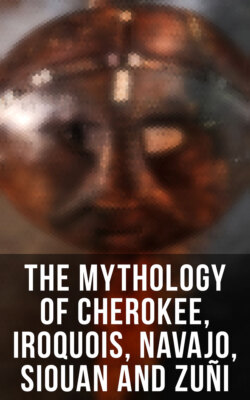Читать книгу The Mythology of Cherokee, Iroquois, Navajo, Siouan and Zuñi - James Mooney - Страница 83
На сайте Литреса книга снята с продажи.
The Lightning Serpent
ОглавлениеAmong the Indians the serpent also typified the lightning. The rapidity and sinuosity of its motions, its quick spring and sharp recoil, prove the aptness of the illustration. The brilliancy of the serpent's basilisk glance and the general intelligence of its habits would speedily give it a reputation for wisdom, and therefore as the possessor of orenda, or magic power. These two conceptions would shortly become fused. The serpent as the type of the lightning, the symbol of the spear of the war-god, would lead to the idea that that deity also had power over the crops or summer vegetation, for it is at the time of year when lightning is most prevalent that these come to fruition. Again, the serpent would through this association with the war-god attain a significance in the eye of warriors, who would regard it as powerful war-physic. Thus, the horn of the great Prince of Serpents, which was supposed to dwell in the Great Lakes, was thought to be the most potent war-charm obtainable, and priests or medicine-men professed to have in their possession fragments of this mighty talisman.
The Algonquins believed that the lightning was an immense serpent vomited by the Manito, or creator, and said that he leaves serpentine twists and folds on the trees that he strikes. The Pawnees called the thunder "the hissing of the great snake."
In snake-charming as a proof of magical proficiency, as typifying the lightning, which, as the serpent-spear of the war-god, brings victory in battle, and in its agricultural connexion, lies most of the secret of the potency of the serpent symbol. As the emblem of the fertilizing summer showers the lightning serpent was the god of fruitfulness; but as the forerunner of floods and disastrous rains it was feared and dreaded.
